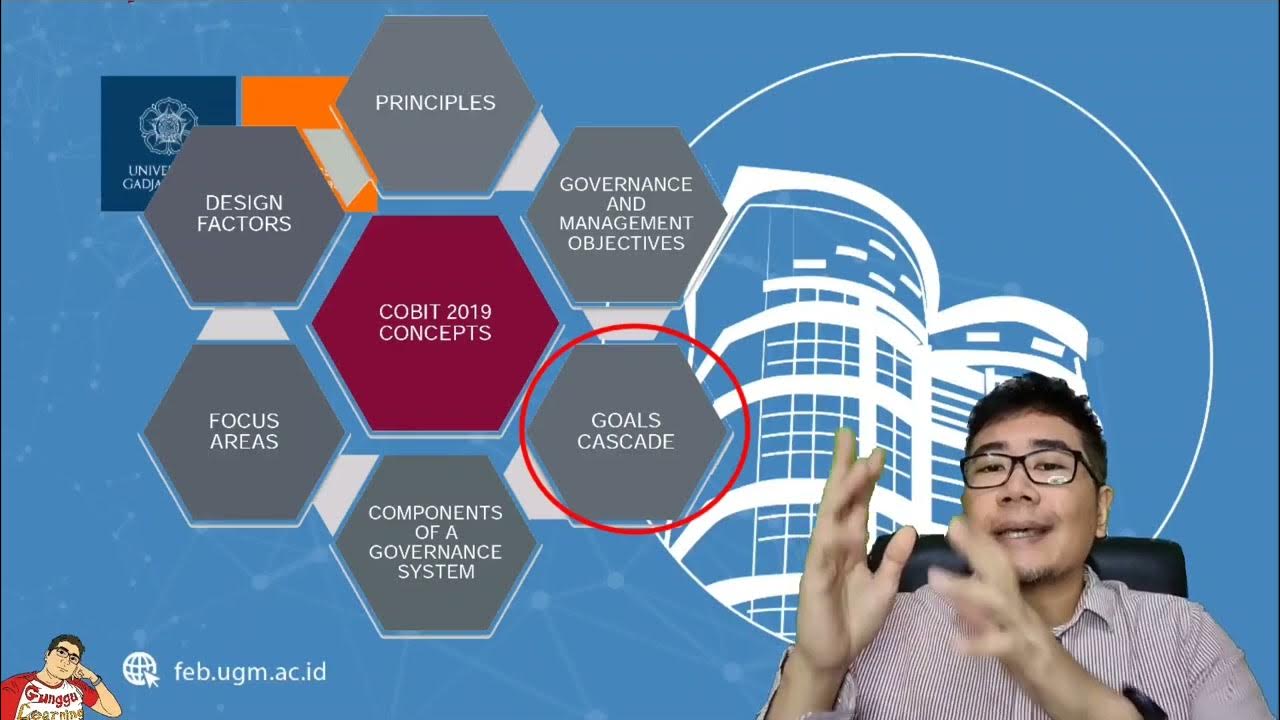What is COBIT and why is it important?
Summary
TLDRThis video explores COBIT (Control Objectives for Information and Related Technologies), a globally recognized framework for IT governance developed by ISACA. It emphasizes the importance of aligning IT with business goals through a structured approach involving governance principles and implementation steps. The updated COBIT 2019 framework includes comprehensive guidance on managing IT processes effectively, ensuring compliance, and facilitating risk management. Additionally, it highlights the framework's compatibility with other standards and the benefits of integrating it with tools like Sprinto for streamlined compliance management. The video aims to equip organizations with the knowledge to enhance their IT governance practices.
Takeaways
- 😀 COBIT stands for Control Objectives for Information and Related Technology, and it is a globally accepted framework for optimizing IT governance.
- 😀 The framework bridges the gap between technical issues, business risks, and control requirements to ensure IT processes align with business goals.
- 😀 COBIT was created by ISACA in 1996 and has evolved through significant updates, including COBIT 5 in 2012 and COBIT 2019.
- 😀 COBIT 2019 introduced a more comprehensive and flexible approach, suitable for enterprises of all sizes and goals.
- 😀 The structure of COBIT 2019 consists of four components: introduction and methodology, governance and management objectives, design guide, and implementation guide.
- 😀 COBIT's six core governance principles emphasize alignment with stakeholder expectations, a holistic approach, adaptability, separation of IT management and governance, customization, and comprehensive inclusion of IT functions.
- 😀 Three new governance principles in COBIT 2019 focus on conceptual models, openness and flexibility, and alignment with major standards and regulations.
- 😀 Implementation of COBIT involves six steps: assessment and planning, defining scope and objectives, building an implementation plan, customizing COBIT, monitoring and evaluation, and continuous improvement.
- 😀 COBIT helps enhance market trust, manage risks effectively, and achieve regulatory compliance, making it beneficial for enterprises.
- 😀 COBIT can complement other frameworks like ITIL, NIST, and ISO 27001, allowing for streamlined compliance and audit processes.
Q & A
What is COBIT?
-COBIT, or Control Objectives for Information and Related Technologies, is a globally accepted framework that helps organizations optimize their IT governance.
Who developed COBIT?
-COBIT was created by ISACA, the Information Systems Auditing Control Association, a nonprofit organization that provides guidance and resources for IT governance professionals.
How has COBIT evolved over time?
-COBIT was first released in 1996 and has undergone several updates, with COBIT 5 launched in 2012 and COBIT 2019 being the most recent update, which made the framework more comprehensive and flexible.
What are the four main components of COBIT 2019?
-The four components of COBIT 2019 are: 1) Introduction and Methodology, 2) Governance and Management Objectives, 3) Design Guide, and 4) Implementation Guide.
What is the significance of the governance and management objectives in COBIT?
-The governance and management objectives provide a core model with 40 objectives that outline the purpose and alignment of IT governance with business goals, helping organizations understand the necessary components for effective governance.
What are the six essential governance principles of COBIT?
-The six principles are: 1) Alignment with stakeholder expectations, 2) Component diversity, 3) Dynamic governance system, 4) Separation of IT management and governance, 5) Customization to enterprise needs, and 6) Inclusiveness of IT functions.
What are the steps for implementing COBIT?
-The six steps for implementing COBIT are: 1) Assessment and Planning, 2) Defining Implementation Scope and Objectives, 3) Building an Implementation Plan, 4) Customizing COBIT, 5) Monitoring and Evaluation, and 6) Continuous Improvement.
How does COBIT help organizations manage risks?
-COBIT helps organizations manage risks by providing a structured framework that ensures IT processes are aligned with business goals, thereby reducing financial and operational risks associated with IT governance.
Can COBIT be integrated with other frameworks?
-Yes, COBIT is designed to complement other frameworks such as ITIL, NIST, and ISO standards, allowing organizations to align their governance strategies across multiple frameworks effectively.
What tools can assist in implementing COBIT alongside other frameworks?
-Tools like Sprinto can assist organizations by integrating COBIT with other compliance frameworks, enabling them to streamline audits and maintain continuous compliance throughout the year.
Outlines

Dieser Bereich ist nur für Premium-Benutzer verfügbar. Bitte führen Sie ein Upgrade durch, um auf diesen Abschnitt zuzugreifen.
Upgrade durchführenMindmap

Dieser Bereich ist nur für Premium-Benutzer verfügbar. Bitte führen Sie ein Upgrade durch, um auf diesen Abschnitt zuzugreifen.
Upgrade durchführenKeywords

Dieser Bereich ist nur für Premium-Benutzer verfügbar. Bitte führen Sie ein Upgrade durch, um auf diesen Abschnitt zuzugreifen.
Upgrade durchführenHighlights

Dieser Bereich ist nur für Premium-Benutzer verfügbar. Bitte führen Sie ein Upgrade durch, um auf diesen Abschnitt zuzugreifen.
Upgrade durchführenTranscripts

Dieser Bereich ist nur für Premium-Benutzer verfügbar. Bitte führen Sie ein Upgrade durch, um auf diesen Abschnitt zuzugreifen.
Upgrade durchführenWeitere ähnliche Videos ansehen

Information Systems Auditing 3b - Information Technology Governance Control (COBIT Framework)

COBIT Explained - ITpreneurs Ask-the-Expert

SOSTAC® - how to write the perfect plan (in 4 minutes)

IT Audit & Control Standards

Estratégia e Governança - Cobit: Processos de TI e diretrizes de implantação (LIBRAS)

Control Frameworks: COSO & COBIT | Fundamentals of Internal Auditing | Part 5 of 44
5.0 / 5 (0 votes)
